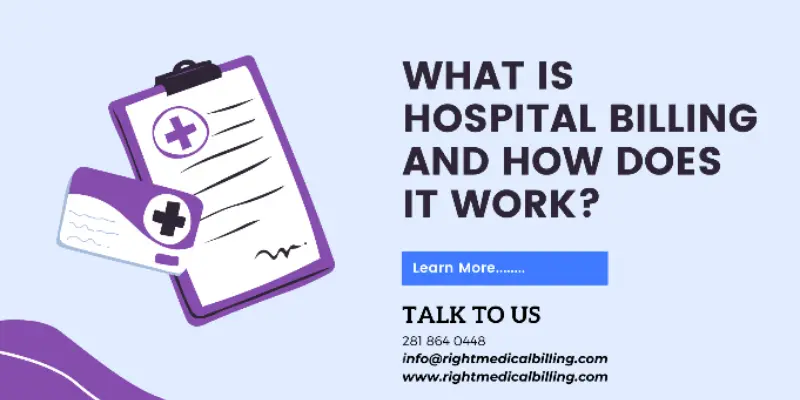What Is Hospital Billing and How Does It Work?
Hospital billing is a time-consuming and challenging procedure. Insurance companies, medical care, physicians, and the government have made it difficult for patients to navigate the system. Medical billing processes and procedures, on the other hand, follow basic standards that can help to clear up the uncertainty.
How does Hospital Billing work? – Process of Hospital Billing

First, let’s take a look at how hospital billing works. Medical billing procedures and processes can be divided into eight simple steps:
- Application Forms
- Establishing financial accountability for the visit
- Check-in and check-out procedures for patients
- Examining coding and billing compliance
- Claim preparation and transmission
- Payer adjudication is being monitored by the account receivable service provider.
- Creating patient bills or statements.
- Assigning patient payments and coordinating collection efforts
- Registration process
When you schedule an appointment, you are pre-registering with your doctor. If this is your first visit to that doctor or provider, you will be asked to supply personal and insurance information to begin the appointment.
Developing Financial Accountability
This stage of the procedure determines how much money is owed for the visit. That will also aid in deciding which insurance policy covers services. Remember that insurance coverage varies, so it might be not cover your services and prescriptions.
Check-in and Check-out of Patients
During check-in, you submit your entire personal and insurance information to the front desk. Your medical report will be generated during checkout and sent to a medical coder. That is converted into medical billing codes and procedures and a superbill is developed and delivered to the medical biller.
Examining Coding and Billing Compliance
Claims must meet fundamental requirements, including the patient’s information and the operations performed. When mailing bills, billers are accountable for adhering to billing compliance rules.
Claims Preparation and Submission
Claims are submitted under the requirements of the biller.
Decision-making
The adjudication procedure requires a payer to analyze a medical claim and determine whether or not it is compliant. The insurance company is usually in charge of this. A claim may be approved, denied, or rejected at this stage.
Observation
The statement is subsequently sent to you and the patient, after this lengthy process. In some cases, you will also receive an Explanation of Benefits.
Collections
Once the bill is received, the patient’s responsibility is to pay any remaining balance that the insurance company may not have. If the patient bill becomes late, it will be forwarded to a collection agency for further action.



